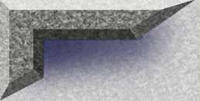|
YOU
ARE THE OWNER OF A NEW PET BABY WHICH NEEDS ALL
THE TENDER LOVING CARE
OF ANY NEW BABY. TLC DOES NOT
MEAN CONSTANT HANDLING,
PETTING AND PLAYING WITH.
STRESS
IS THE MAIN CAUSE OF ILLNESS AND
DEATH IN NEWLY
ACQUIRED PUPPIES!
PLEASE READ
THIS CAREFULLY
There
are many sources of stress. Simply moving a puppy to a new home, holding him too much, contending with another pet, or being
allowed to much playtime are just a few of the many sources of stress. A new puppy is nervous and excited because they are
unfamiliar with their surroundings and their new families and this may cause a lot of stress. They are like babies who
need regular scheduled time for eating, sleeping, drinking, going to the potty and playing.
Having A Crate
It can be a carrier, a cage,
a playpen, or a small enclosed are in a quiet room of your home. The crate serves two purposes. It will house train your pet
and it protects its health and well being while it grows. The crate provides a secure, comfortable place where he can rest,
eat, drink, and play at his own pace. The crate should be placed in an area where the temperature stays about the same all
the time. Avoid drafty areas such as cooling vents. Provide a comfortable bed in the crate since puppies sleep approximately
90% of the time until they are older. A heating pad, turned on low and placed under the crate, is often used to keep the puppy
from getting chilled when they sleep. It is very easy for a puppy to become chilled when sleeping on a cool floor. Just remember
how cold the floor feels to your bare feet in the morning, especially tile and linoleum floors! They will need food and water
available to them in the crate at all times. This allows them to eat, rest, and drink as they need to so they can grow properly.
AVOID EXCESS HANDLING.
Too much of this can add stress and overtire
the puppy.A puppy can be played with for about 30 minutes at a time at first. Taking him out for his potty break should begin
his playtime. This schedule for playing can be increased gradually, week by week, as the puppy grows older and becomes stronger.
The rest time should remain the same. He needs at least 2 hours or more at a time in his crate, undisturbed, for rest. GIVING
HIM THE QUIET TIME FOR REST IS A MUST!
BATHING
AND FLEA PRODUCTS
The first bath should
be about a week or so after you bring him home to allow time for the puppy to become adjusted to his new environment and not
add to any stress he may be experiencing. Use warm water and a shampoo made for puppies that does not have a flea product
in it. Towel him dry and then use a blow dryer on low heat to completely dry him. Keep him warm for a while afterwards to
prevent chilling. If you need to use something for fleas, ask for a recommendation from your vet. He or she will show you
how to apply the correct dosage for your small pet. Adams Flea And Ticl Water Base Products can also be Found any local pet
store and is safe for pups 2wks and older. NO FLEA COLLARS ON PUPPIES! NO CHEMICAL DIPS, ONLY SAFE ORGANIC PRODUCTS MADE FOR
PUPPIES. ( I prefer shampoos with either lanolin or aloe vera in the base. Both help prevent dry, flakey and itchy skin. Citrus
shampoos not only leave your puppy smelling nice, fleas hate it. It doesn't kill them with chemicals, just repels them from
your puppy. There are also citrus based deodorizing sprays available that are safe for puppy and his surroundings. NO FABREEZE ON PUPPY OR HIS BEDDING)
TRICKS OF THE TRADE
Here are a few tricks of the trade we have
learned that work for our kennel, but remember, we are not veterinarians:
1.
CONSTIPATION
Mineral Oil, 1 cc per day until dog is no longer
constipated. Should work within 48 hours
2.
UPSET STOMACH
Pepto Bismol, 1 cc/pound up to 5 cc's every hour
until vomiting stops. If vomiting does not stop within 8 hours, contact a vet.
3.
DIARRHEA
Kaopectate,
½ cc per pound of body weight, every 2 hours.
(Disclaimer: This
information has been compiled from years of dealing with this problem. The information written is whathas worked in the past.
This information should be taken to any veterinarian who is treating dogs with this problem.)

|

